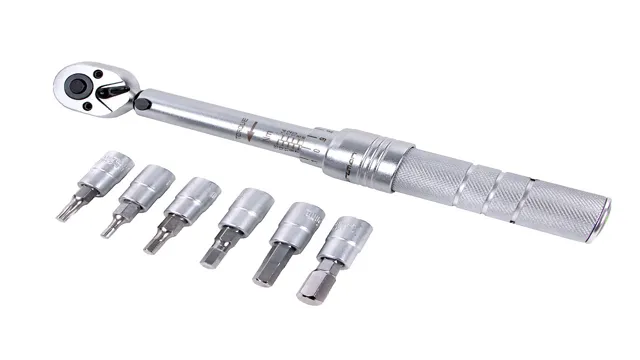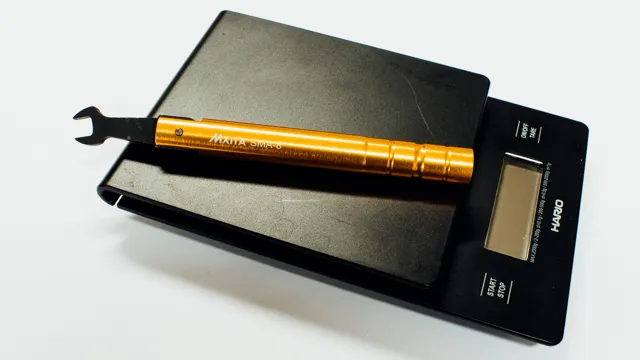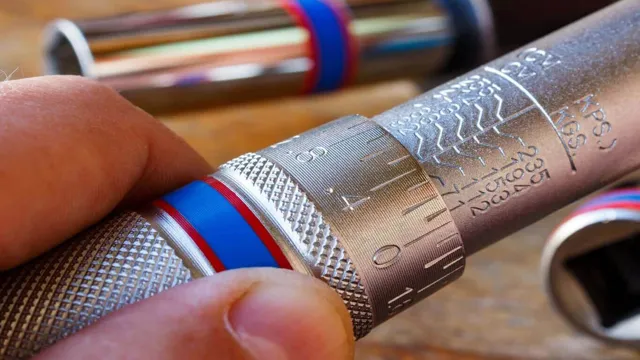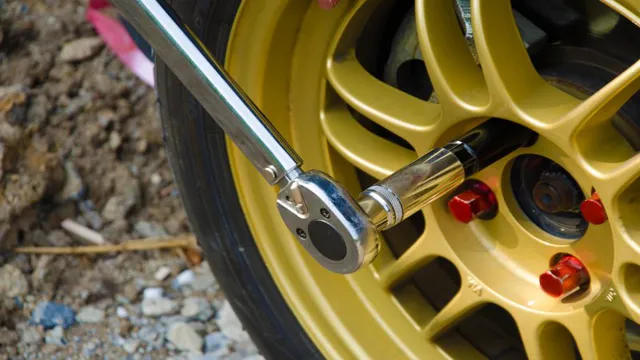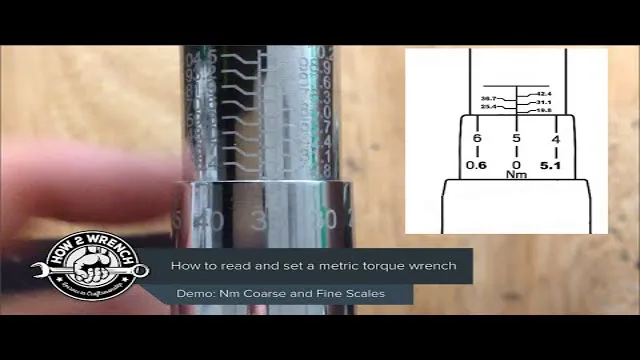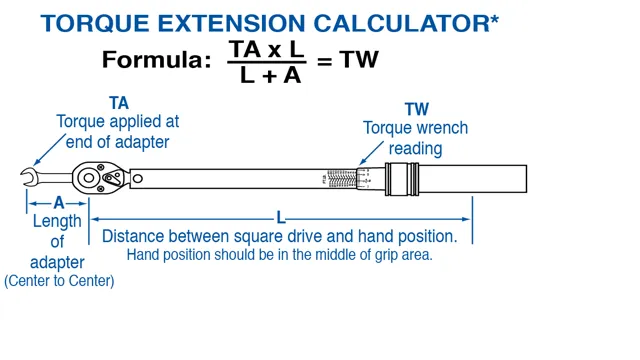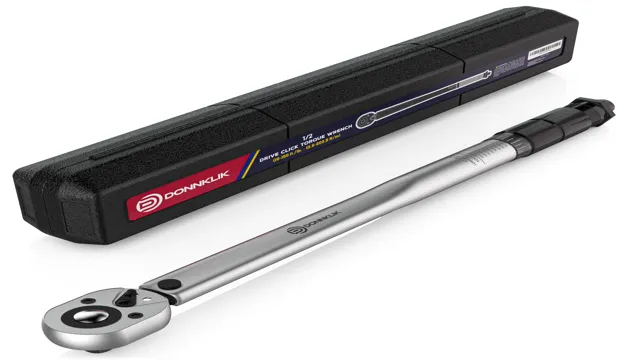How to Read a Dial Torque Wrench Like a Pro: Tips and Tricks
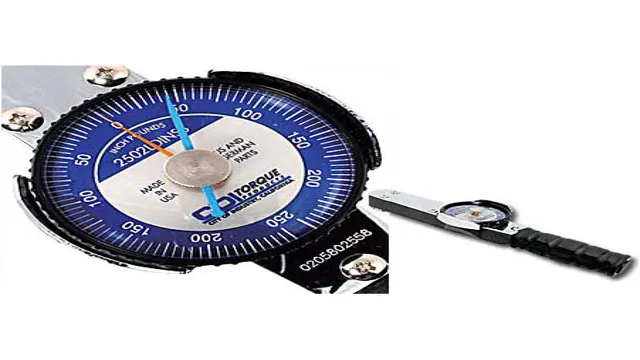
If you’ve ever had to work on a project that required precision and accuracy, you know the importance of using the right tools. A torque wrench is an essential tool for any mechanic or DIY enthusiast who wants to ensure that bolts and nuts are tightened to the right specification. But if you’re not familiar with how to use it, a dial torque wrench can be a little intimidating.
Don’t worry, though – once you know how to read a dial torque wrench, it’s a simple and straightforward process. In this blog post, we’ll take you through the steps you need to follow to get the most out of your torque wrench and avoid any costly mistakes.
What is a Dial Torque Wrench?
A dial torque wrench is a type of torque wrench that uses a dial indicator to display the amount of torque being applied. It is a tool commonly used in the automotive and mechanical industries to tighten bolts and nuts to a specific torque value. To read a dial torque wrench, you first need to set the desired torque value on the wrench by adjusting the handle or the scale on the dial indicator.
Next, place the wrench on the bolt or nut you wish to tighten and apply force until the dial indicator reaches the desired torque value. The dial indicator measures the resistance applied and displays it on the dial. It is essential to read the dial carefully to ensure that the correct torque value is applied.
Remember that overtightening can damage the bolt or nut, while under-tightening can result in equipment failure. A dial torque wrench is a useful tool when working on machines, automobiles, or other equipment that requires precise torque settings, and understanding how to use it correctly is vital to produce the best results.
Definition and function
A Dial Torque Wrench is a precision tool used to measure the amount of torque being applied to a fastener. It is designed with a rotating dial or digital display that can be customized to display the measured torque in different units such as pound-feet, Newton-meters, or inch-pounds. A Dial Torque Wrench is used in various applications such as automotive repair, machine maintenance, aerospace engineering, and many others.
The primary function of this tool is to ensure that the fasteners are tightened to the correct torque specification, which is critical in preventing failures, accidents, and costly repairs. By using a Dial Torque Wrench, you can achieve accurate and consistent torque settings, which is essential for achieving optimal performance and durability for machines, engines, and other equipment. With a Dial Torque Wrench, you can easily adjust the torque settings and achieve the desired torque output, saving you time, effort, and money in the long run.
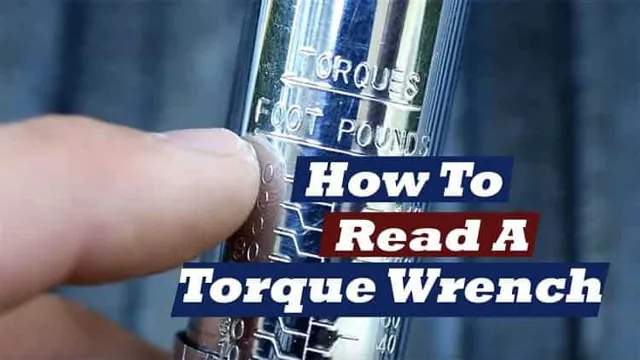
Types of Dial Torque Wrenches
When it comes to using a dial torque wrench, there are different variations that you should be aware of. The first is a beam-style dial torque wrench, which gets its name from the elongated beam that acts as the lever arm. These are simple and reliable, but can be bulky and cumbersome to use in confined spaces.
Another type is a deflecting beam dial torque wrench, which works by deflecting a beam through a known angle when torque is applied. These are more precise and versatile than beam-style wrenches, but require periodic calibration. Finally, there are digital dial torque wrenches, which use electronic sensors to measure torque.
These are the most accurate and user-friendly option, but can be expensive and require batteries. No matter which type of dial torque wrench you use, it’s important to know how to properly read and interpret the dial so that you can achieve accurate and consistent results every time. By familiarizing yourself with the unique features of each type, you’ll be able to choose the one that best suits your needs and preferences.
Analog and digital
When it comes to torque wrenches, there are two main types: analog and digital. Within the analog category, there are further options for dial torque wrenches. These types of wrenches feature a scale on the handle which displays the amount of torque being applied.
There are two sub-types within the dial category: deflecting beam and split beam. Deflecting beam wrenches use a beam that flexes as torque is applied, while split beam wrenches use a more complex design that separates the beam into two pieces. Both types are known for their accuracy and ease-of-use, making them a popular choice among mechanics and DIY enthusiasts alike.
Whether you’re a professional mechanic or just looking to do some work on your car at home, an analog dial torque wrench can be a reliable and valuable tool in your toolbox.
Steps to Read a Dial Torque Wrench
To read a dial torque wrench, there are a few easy steps you can follow. First, make sure that the wrench is set to the correct level of torque for the task at hand. Next, align the needle of the dial with the zero mark on the gauge.
Then, apply the wrench to the fastener and turn it until the desired torque level is reached. As you turn the wrench, the needle on the dial will move in a clockwise direction, indicating the level of torque being applied. Once you reach the desired torque level, stop turning the wrench and release the pressure.
Finally, make note of the torque level on the gauge to ensure accuracy and consistency in future tasks. With these simple steps, you’ll be able to confidently read a dial torque wrench for whatever job comes your way.
Step-by-step guide with images
Reading a dial torque wrench may seem intimidating at first, but it’s actually quite simple. Here’s a step-by-step guide with images to help you read a dial torque wrench. Firstly, make sure you’re holding the wrench correctly.
Place the square drive onto the fastener and apply force in a clockwise direction. As you turn the wrench, you’ll see the dial’s needle move, indicating the torque being applied. The number on the dial indicates the amount of torque being applied.
Be sure to read the dial from the correct angle so as not to distort the reading. Additionally, make sure you’re reading the correct units as some torque wrenches may have measurements in Newton meters (Nm) or foot-pounds (ft-lbs). Remember to keep the wrench clean and well-calibrated for accurate readings.
With these simple steps, you’ll be able to use a dial torque wrench with confidence, ensuring precision and accuracy in your work.
Tips for Using a Dial Torque Wrench
If you’re working on a project that requires precise torque measurements, it’s important to know how to read a dial torque wrench correctly. To use it properly, start by setting the desired torque on the wrench’s dial. Then, apply the wrench to the nut or bolt you’re tightening until the wrench clicks or the dial’s pointer reaches the desired torque setting.
After that, stop applying pressure to the wrench and release it from the nut or bolt. It’s important to keep an eye on the dial while using the wrench to make sure you’ve reached the desired torque correctly. If you’re unsure about the accuracy of your measurements, it’s best to double-check them with a second torque wrench or seek professional assistance.
By taking proper care and attention to using a dial torque wrench, you can ensure that your project is completed correctly and safely.
Dos and Don’ts
When it comes to using a dial torque wrench, there are a few dos and don’ts that you should keep in mind. First and foremost, do make sure that you are using the correct type of torque wrench for the job at hand. Different torque wrenches are designed to work with different types of bolts and nuts, so using the wrong one could lead to incorrect and potentially dangerous results.
Another important tip is to always double-check your measurements before tightening or loosening bolts. The torque settings on a dial torque wrench can be very precise, but they are only as accurate as the user who sets them. On the don’ts side, it’s important to avoid over-torquing bolts.
This can cause them to break or become damaged, leading to costly repairs and potential safety hazards. Additionally, don’t use a torque wrench as a breaker bar or ratchet – torque wrenches are designed specifically for measuring and applying torque, and using them for other purposes can damage the tool and compromise its accuracy. By following these tips and using your dial torque wrench correctly and responsibly, you can tackle all your automotive or mechanical projects with confidence and precision.
The main keyword used organically in this paragraph is “dial torque wrench”.
Why Proper Use of a Dial Torque Wrench is Important
Proper use of a dial torque wrench is crucial to achieve accurate torque measurements. But, how to read a dial torque wrench can seem complicated at first, especially for those who are new to using one. Firstly, it is important to ensure the wrench is set to the correct torque measurement by adjusting the dial to the desired setting.
Then, place the wrench on the nut or bolt to be tightened and turn until the wrench clicks or signals that the desired torque has been achieved. It is vital to avoid over-tightening bolts or nuts as it can lead to damage, while under-tightening can result in loose or insecure fittings. With correct use and regular maintenance, a dial torque wrench can provide accurate and reliable torque measurements for years to come.
Avoiding equipment damage and injury
Using a dial torque wrench properly is crucial in preventing equipment damage and injury. A torque wrench is designed to apply a specific amount of force to a fastener, ensuring that it is tightened to the correct tension. If the torque setting is too low, the fastener may come loose or leak.
On the other hand, overtightening can cause the fastener to break or strip the threads. Therefore, it is essential to use a calibrated dial torque wrench to tighten fasteners to the manufacturer’s recommended torque specifications. By doing so, you can prevent equipment damage, reduce the risk of injury, and ensure that your tools and machinery perform at their best.
So, when using a dial torque wrench, make sure to align the tool properly, apply steady pressure, and read the gauge carefully to avoid any mishaps.
Conclusion
In conclusion, reading a dial torque wrench is like decoding a secret message. First, make sure you have the right units set and understand the torque specifications for your application. Then, align the pointer with the desired torque setting and tighten until the wrench clicks or the needle reaches the right level.
With a little practice, you’ll become a torque master, able to tighten bolts with the precision of a ninja! So, grab your wrench and get twisting – the world (and your machinery) is waiting for your perfectly calibrated touch.”
FAQs
What is a dial torque wrench used for?
A dial torque wrench is used for tightening bolts to a specific torque value.
How do you calibrate a dial torque wrench?
To calibrate a dial torque wrench, you need to use a torque analyzer or send it to a calibration service.
What is the difference between a click-type torque wrench and a dial torque wrench?
A click-type torque wrench gives an audible click when the target torque is reached, while a dial torque wrench shows the torque value on a dial indicator.
Can a dial torque wrench be used for both tightening and loosening bolts?
Yes, a dial torque wrench can be used for both tightening and loosening bolts, but it is primarily designed for tightening.
What is the advantage of using a digital torque wrench over a dial torque wrench?
A digital torque wrench provides a more precise torque reading and can store torque readings for multiple bolts, while a dial torque wrench requires you to read the torque value directly from the dial indicator.
What is the minimum and maximum torque range of a typical dial torque wrench?
The minimum and maximum torque range of a typical dial torque wrench is 0-150 lb-ft or 0-200 Nm.
How often should a dial torque wrench be calibrated?
A dial torque wrench should be calibrated at least once a year or after every 5,000 cycles of use, whichever comes first.

